Do puppy eyes change color? Yes, puppy eye color is not yet complete at birth. Their eyes typically start out with a gray-blue color. As pigment continues to fill in, puppy eye colors can change from pale green to light golden before they eventually darken to amber or brown.
When do puppy eyes change color? You will notice a gradual change in eye color as soon as a puppy opens its eyes. This change can be more subtle in dogs that will later have pale eyes.
Do all puppies change eye color? No, some puppies will keep their sky blue eyes. At around 3-4 weeks of age, you can usually start to tell whether an eye may stay solid or partially blue.
Pigment Types
Dogs make two different types of pigment.
Phaeomelanin is a yellow pigment but can come in a range from white to deep chestnut red.
Eumelanin is a black pigment but can be modified to either brown, blue, or lilac on individual dogs.
Depending on a number of coat color genes, dogs can have either only one of these pigments or both at the same time in their coat. Some white markings may cover some or all of their coat color.
However, the eyes and nose only use eumelanin pigment for color.
See, how all of these puppies have very different coat colors. However, all of them have a black-based pattern and a black nose and dark brown eyes?




Eye Colors In Dogs
Adult dog eye colors are determined by the color and quantity of pigment in the iris.
The iris is a pigmented tissue inside the eye that surrounds the pupil.
When light enters the eye the iris pigment absorbs part of the light. The wavelengths that make it back out are what you perceive as your dog’s eye color.

Each dog is fixed for either black, brown, blue, or lilac eumelanin pigment.
The default black eumelanin in dogs is able to absorb lots of light and dogs with black pigment typically have brown eyes. Pigment colors such as brown, blue, or lilac typically give lighter eyes.



Now, the amount of pigment is caused by unknown modifiers. However, pigment density shows a pattern of inheritance and breeders can select for darker or lighter eyes in their dogs.
Together, pigment color and pigment density create a fantastic variety of eye colors in adult dogs that range from a high amount of dark pigment to a low amount of light pigment.
And there can also be a lack of pigment which can cause eyes to stay (partially) blue.
Here are some dogs with black, brown, blue or lilac pigment showing increasingly darker eye colors:













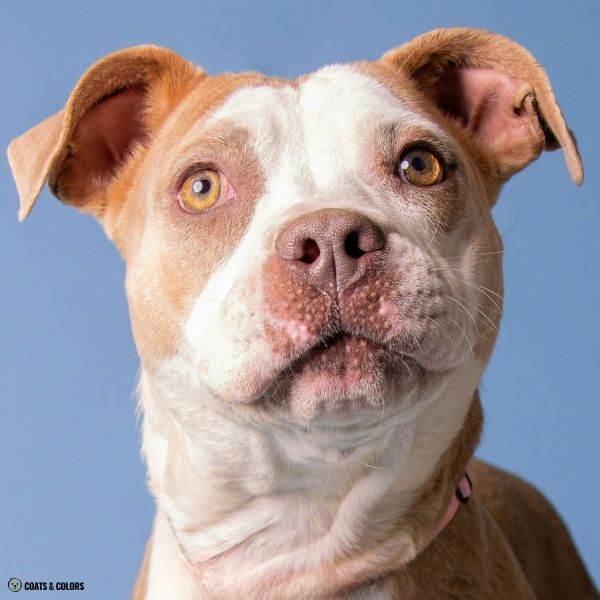


Dogs with black pigment have on average darker eyes than dogs with brown or diluted pigment.
However, there is some overlap as darker colors can compensate for low density, and high density can compensate for lighter colors. So there are different ways to achieve a similar eye color.
As a common rule of thumb, black dogs have brown eyes, chocolate brown dogs have amber eyes, and blue or lilac dilute dogs have pale golden eyes. But this is by far not always the case.
All colors of pigment show the same range of intensity which can cause light or dark eye colors.
A dog with black pigment can have pale yellow eyes.
And a dog with brown or diluted pigment can have dark brown eyes.
It’s just that many breeds of black dogs breed for as-dark-as-possible eyes. And a lot of breeds with brown or dilute colors tolerate lighter eyes. But eye colors may vary regardless of base color.
Puppy Blue Eyes
A lack of pigment in the iris can give permanently blue eyes.

Blue is a structural color that happens when there is no pigment to absorb light.
In this case, light still interacts with the mesh of fibers inside the eye tissue. And blue light just happens to get scattered back out more easily than other wavelengths.

Puppies start to open their eyes roughly at around 10-14 days after birth. By this time, many puppies still have dark gray or blue eyes. Tat’s because their eye pigmentation is not yet complete.
Many puppies have temporarily blue eyes.



The quantity of pigment granules continues to build up for quite some time after birth. And pigment still filling in at different rates is what causes a puppy to change eye color.
This means, more often than not a puppy will outgrow their blue eyes. This is why people call them puppy blue eyes or false blue eyes to distinguish them from puppies with a permanent blue eye color.
Puppy Eye Colors
We now know that puppies often start out with less-pigmented blue eyes. From here, they build up their eye color which is determined by the color and amount of eumelanin.
A good way to guesstimate how dark their eyes will be is to look at their parents and other close relatives. Regardless of pigment color, dark or pale eyes tend to run in families (this is of course not super accurate as there are still a lot of unknowns regarding eye color).
Puppy eye colors typically darken from their original blue or dark gray to a greenish yellow. With more and more pigment their eyes will appear more yellow, with shades often described as golden, amber, or honey-colored. From there, their eyes may darken further into a hazel or brown color.
Every puppy develops their eye pigments at different rates.
The first hints of puppy eye color change can be subtle at first with just a tinge of green.

Some puppies will then quickly develop brown eyes. And some dogs with lighter pigment take months or even years to develop their final color with their eyes still getting gradually darker.
When your dog is about 3-6 months old, the eyes usually start to come close to their final color.
Black-Based Patterns
Dogs with a D/- B/- genotype have black eumelanin.
Their puppy eyes often turn from dark blue to olive-gray which can quickly change to a shade of brown. However, some dogs will have yellow eyes and may build up pigment more slowly.






Brown-Based Patterns
Dogs with a D/- b/b genotype have their eumelanin color modified to brown.
Most of them slowly switch from blueish gray to green eyes which then change to a more yellow color. Puppy eyes in brown dogs typically turn honey or amber and can darken to hazel or brown.






Blue-Based Patterns
Dogs with a d/d B/- genotype have diluted black pigment.
Dogs with color dilution often have somewhat pale eye colors. Puppy eyes change from blue to light gray-green to golden and amber eyes and may or may not sometimes darken to hazel or brown.
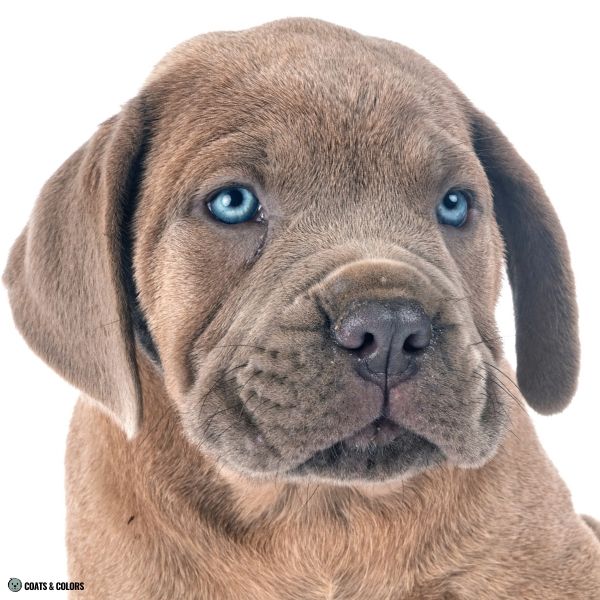





Lilac-Based Patterns
Dogs with a d/d b/b genotype have diluted brown pigment.
These dogs typically start with sky blue eyes that turn pale green, light golden or yellow. But there are some lilac dogs with darker amber colors or honey-yellow or hazel eyes.



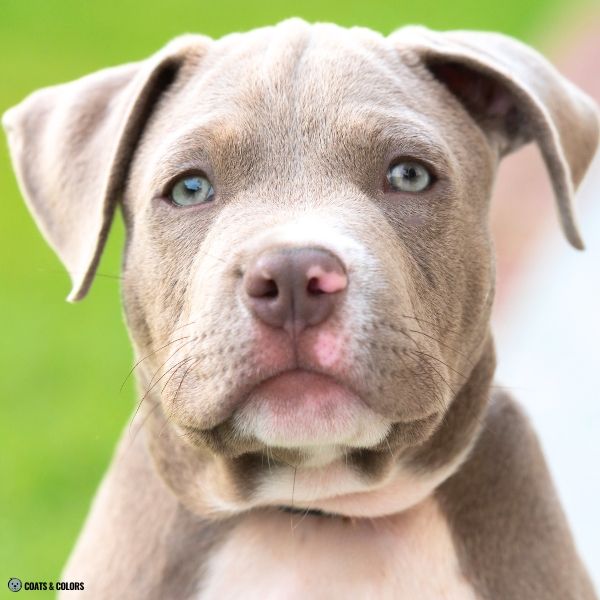

My Puppy Has Blue Eyes …Will They Change?
Some puppies with blue eyes will keep their blue eyes.

Blue eyes are often a side effect of other traits that disrupt pigmentation.
Blue eyes are likely to happen in dogs with white markings extending across their face. Blue eyes and marbled eyes are also a very common in merle dogs. And the blue eye variant found in Aussies and Huskies can give blue eyes regardless of a dog’s coat color. These traits explain most blue eyes in dogs.

And it’s relatively easy to guess if a puppy dog with blue eyes will keep its eye color.
Baby blue eyes are not the light icy blue you see in real blue eyes or the blue portions of partially blue-flecked or marbled eyes. Puppy blues are more of a dark grayish-blue color.
Some dogs have two solid blue eyes. But there are many dogs with heterochromia, only one blue eye (complete heterochromia) or only portions of their eyes being blue (partial heterochromia).
And as soon as pigment should start to fill in, you’ll see where it’s missing.
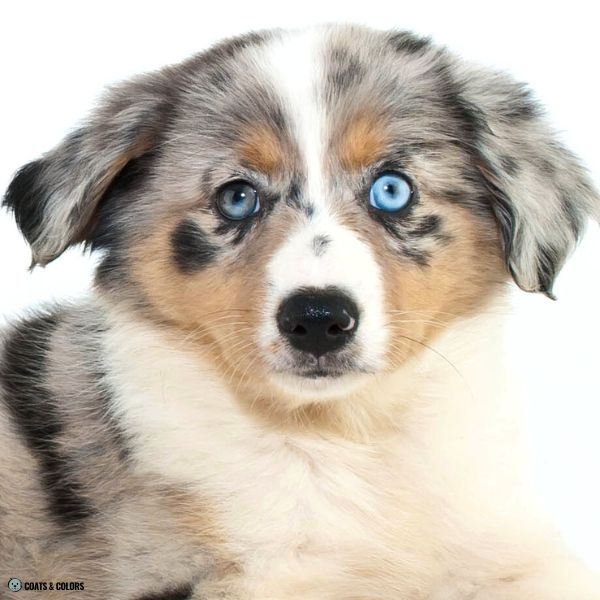
This is easy to spot in a puppy with two different-colored eyes or marbled eyes. Although eye color is still changing, you will see that sections of the iris show different eye colors on the same puppy.
Puppy eyes that will stay blue are a pale ice blue color. The difference to gray-blue puppy eyes will be very obvious if you there are both blue-eyed and “false blue-eyed” puppies in the same litter.
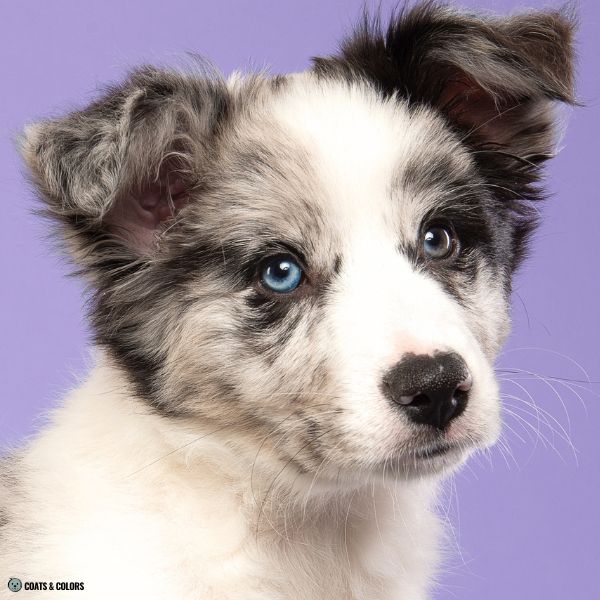
A trick some people may tell you is to take a photo of the puppies with the flash on. Sometimes, puppies with “staying blue” eyes will have red eyeshine while dogs with brown and amber eyes reflect green eyeshine. But this is no way 100% foolproof, there are a ton of factors that can affect eyeshine color.
When Do Puppies Eyes Change Color?
When do puppies lose their blue eyes?
Once puppy eyes open and get exposed to light, their eye color will start to change. With each passing day, the pigment becomes more concentrated and the iris turns from blue to golden or brown.

At around 3-4 weeks of age, you can usually start to tell whether an eye will stay blue. By this time, eye color should have darkened to at least a steel blue color while real blue eyes will still be sky blue.
Puppies in the same litter can change eye color at different rates. Some may still have dark blue eyes while others have already developed enough pigment to make their eyes look green or amber.

Dogs with black pigment that will have brown eyes are typically the first to show darker eye colors. They will have brown eyes early in life which may then just darken into a more intense shade of brown.
In comparison, at 8-10 weeks of age, eye color can still be very pale in brown or dilute dogs. At this age, the color on a puppy with green eyes can very likely still turn golden before it continues to darken.

Learn More
Links

Hi! I’m Steffi. I am a biologist and a big time dog nerd. You are curious about coat color genetics? You’ve come to the right place! Read more.







